In the serene forests, along the flowing rivers, and under the vast skies of Japan, the ancient practice of Shinto quietly thrives. Shinto, often referred to as “the way of the gods,” is deeply rooted in the reverence of nature. It teaches us that every element of the natural world, from the smallest stone to the tallest mountain, holds divine significance. This article explores how Shinto’s perspective on nature worship can inspire modern spiritual connection and mindfulness.
1. The Essence of Shinto: A Celebration of Nature
Shinto, Japan’s indigenous spiritual tradition, emphasizes the belief that kami, or divine spirits, reside within nature. Unlike many religions that define gods as omnipotent beings separate from the earthly realm, Shinto views the divine as intrinsically woven into the natural world.
Yaoyorozu no Kami (The Eight Million Gods)
“Yaoyorozu” translates to “an innumerable number” and refers to the countless deities believed to exist in Shinto. These gods are thought to reside in nature, daily life, and even in historical figures.
Key Characteristics
• Nature Deities: Gods of mountains, seas, winds, fires, and other elements of nature.
• Guardian Deities: Gods that protect homes (e.g., the kitchen god) or bring prosperity in business.
• Universal Teaching: The belief that everything has a sacred essence promotes harmony with nature and respect for others.
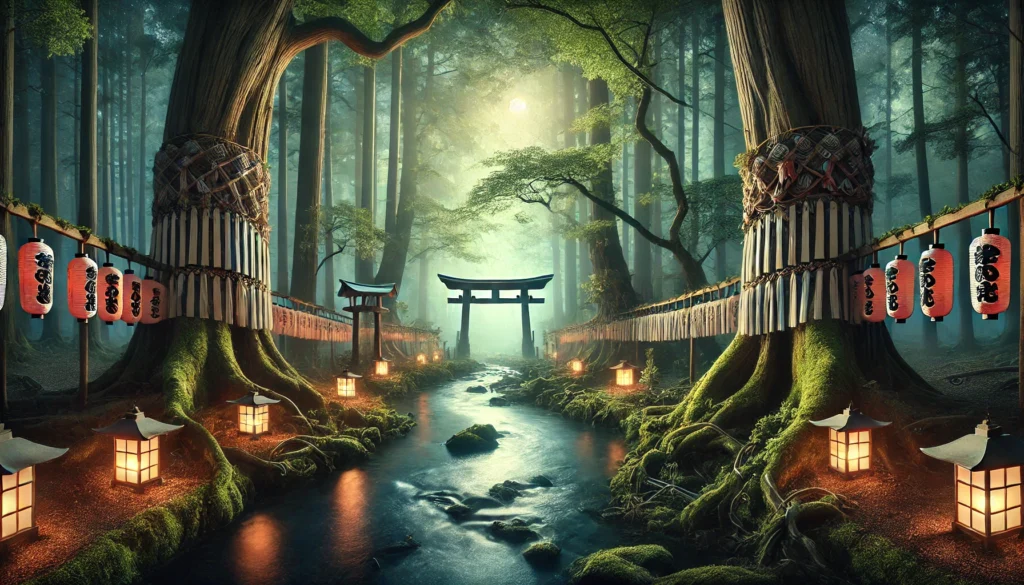
Amaterasu Omikami (The Sun Goddess)
Amaterasu Omikami is the sun goddess in Japanese mythology and the ancestral deity of the Imperial Family. She is a central figure in Takamagahara (the heavenly realm) and symbolizes brightness and life.
Mythology
• The Legend of the Rock Cave: Angered by her brother Susanoo’s actions, Amaterasu hid herself in the Amano-Iwato (heavenly rock cave), plunging the world into darkness. The other gods worked together to lure her out, restoring light to the world.
• Symbolism: The sun, light, prosperity, and hope.
• Worship:Amaterasu is enshrined at Ise Grand Shrine (Naiku), which attracts worshippers from across Japan.
Izanagi no Mikoto
Izanagi no Mikoto is a creation deity in Japanese mythology. Together with Izanami no Mikoto, he created the Japanese islands and many gods.
Mythology
• Creation of the Land (Kuni-umi): Commanded by the heavenly deities, Izanagi cooperated with Izanami to create the islands of Japan (Oyashima).
• Creation of the Gods (Kami-umi): He and Izanami gave birth to many deities that govern nature and life.
• Journey to the Underworld: After Izanami’s death, Izanagi attempted to bring her back from Yomi (the underworld) but failed. Upon his return, he performed a purification ritual (misogi), during which new deities were born, including Amaterasu, Tsukuyomi (the moon god), and Susanoo (the storm god).
• Symbolism: Creation, purification, and order.
Izanami no Mikoto
Izanami no Mikoto is the wife of Izanagi and a creation goddess. She is regarded as a maternal figure who gave life to the Japanese islands and many deities.
Mythology
• Creation of Land and Gods: She partnered with Izanagi to form the Japanese islands and give birth to numerous gods. However, she died during the birth of the fire god Kagutsuchi.
• Afterlife in Yomi: After her death, Izanami resided in Yomi. She refused to return to the living world despite Izanagi’s attempt to bring her back.
• Symbolism: The source of life, death, and rebirth.
• Worship: Known as a goddess prayed to for marital harmony and prosperity in life.
Common Themes Among These Deities
1. Harmony with Nature: All these deities, including the Yaoyorozu no Kami, are deeply tied to nature. They reflect the Japanese worldview and cultural practices that emphasize coexistence with the natural world.
2. Creation and Renewal: Izanagi and Izanami represent creation, while Amaterasu symbolizes light and life’s renewal.
3. Spiritual Teachings: Shinto deities do not impose strict religious doctrines but inspire gratitude for daily life and nature, fostering mindfulness and respect.
2. Practices of Nature Worship in Shinto
Shinto rituals and practices are designed to foster a deeper connection with nature and its divine essence. Here are some key practices:
Shrine Worship (Jinja)
Shinto shrines are often located in pristine natural settings, such as forests, mountains, or near water. These sites are chosen for their purity and connection to the kami. Visitors perform rituals such as:
• Purification (Misogi): Washing hands and mouth to cleanse the spirit before entering the shrine.
• Offering Prayers: Bowing and clapping to communicate with the kami.
• Nature Walks: Reflecting on the surrounding environment as part of the spiritual experience.
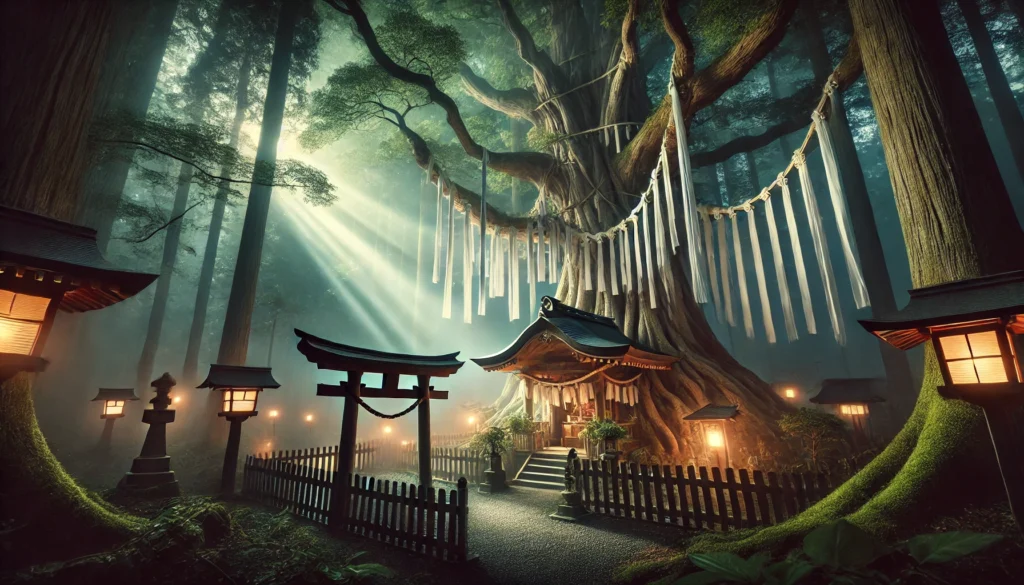
Seasonal Festivals (Matsuri)
Matsuri are celebrations that honor the changing seasons and their associated kami. These festivals remind participants of the cyclical beauty of nature, fostering gratitude for the harvest, rainfall, or blooming flowers.
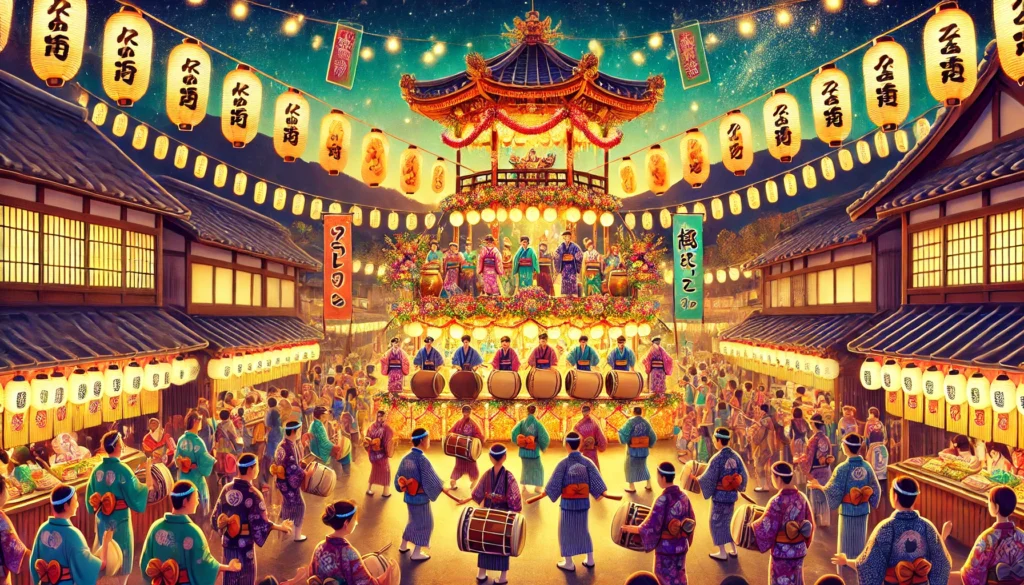
3. The Spiritual Lessons of Shinto’s Nature Worship
Shinto’s reverence for nature offers timeless lessons for cultivating spiritual mindfulness in our modern lives:
a) Seeing the Divine in the Ordinary
Shinto teaches us to find divinity not in distant heavens, but in the elements around us. The sound of rustling leaves, the sparkle of a stream, or the stillness of a stone can all be moments of spiritual connection.
b) Embracing Purity and Renewal
Water rituals in Shinto emphasize the importance of physical and spiritual purification. Similarly, we can use nature as a tool for renewal—walking through a forest, meditating by a river, or simply breathing deeply in a natural setting.
c) Living in Harmony with Nature
Shinto instills a sense of responsibility to live harmoniously with nature. The belief in kami encourages us to respect and protect the environment, as harming it is akin to disrespecting the divine.
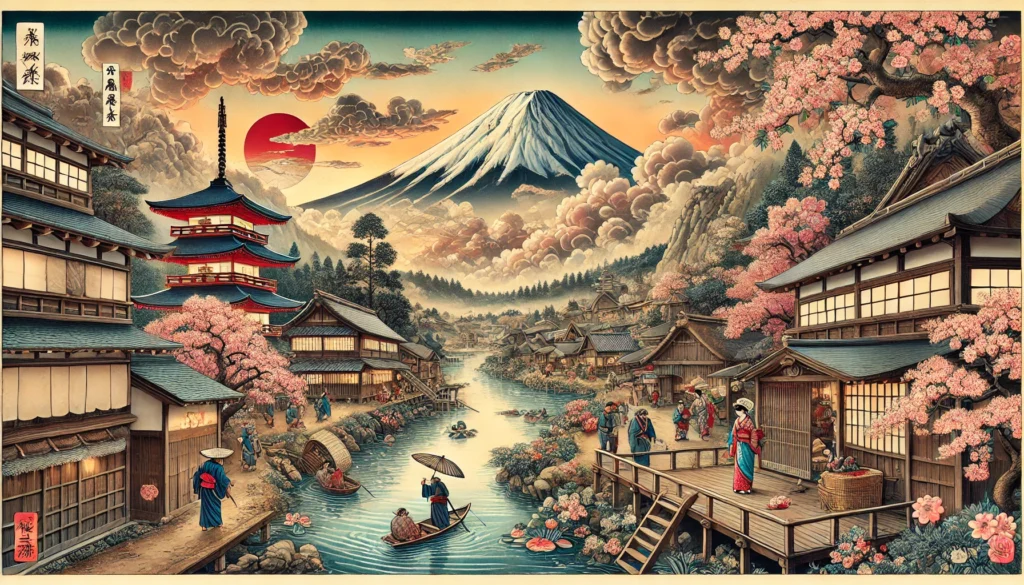
4. Shinto’s Relevance in Modern Spirituality
In an era where people are increasingly disconnected from nature, Shinto offers a path back to balance. Its practices and philosophies remind us that we are part of a larger, sacred ecosystem. By embracing Shinto-inspired mindfulness, we can:
• Reconnect with nature: Spend time outdoors with a sense of reverence.
• Practice gratitude: Acknowledge the gifts of the natural world, such as fresh air, clean water, and seasonal beauty.
• Simplify spirituality: Focus on quiet, everyday moments that bring peace and clarity.
5. Incorporating Shinto Wisdom into Your Life
You don’t need to be in Japan to embrace Shinto-inspired nature worship. Here are a few simple practices you can try:
• Create a sacred space: Dedicate a corner of your home to honor nature—place stones, leaves, or flowers as symbols of the divine.
• Practice outdoor mindfulness: Take walks in natural settings, observing the details of your surroundings with gratitude and presence.
• Celebrate the seasons: Acknowledge the changing seasons by decorating your space, journaling, or meditating on their beauty.
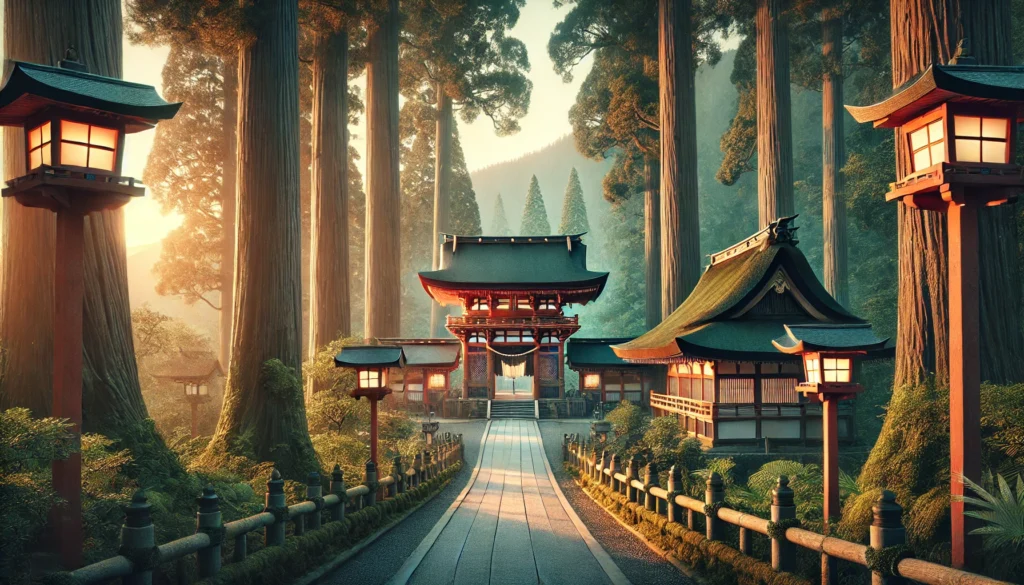
Conclusion: Rediscovering Sacred Connection Through Nature
Shinto’s philosophy of nature worship reminds us that the world around us is alive with spiritual energy. By tuning into this energy, we can cultivate a deeper sense of peace, gratitude, and purpose. Whether through quiet reflection in nature or simple daily rituals, Shinto offers a profound way to reconnect with the sacred in all things.
“The mountains, rivers, and trees are not just objects; they are sacred beings with their own divine spirit. To honor them is to honor the universe itself.”
What aspects of nature make you feel connected to the divine? Share your thoughts in the comments below! 🌿✨

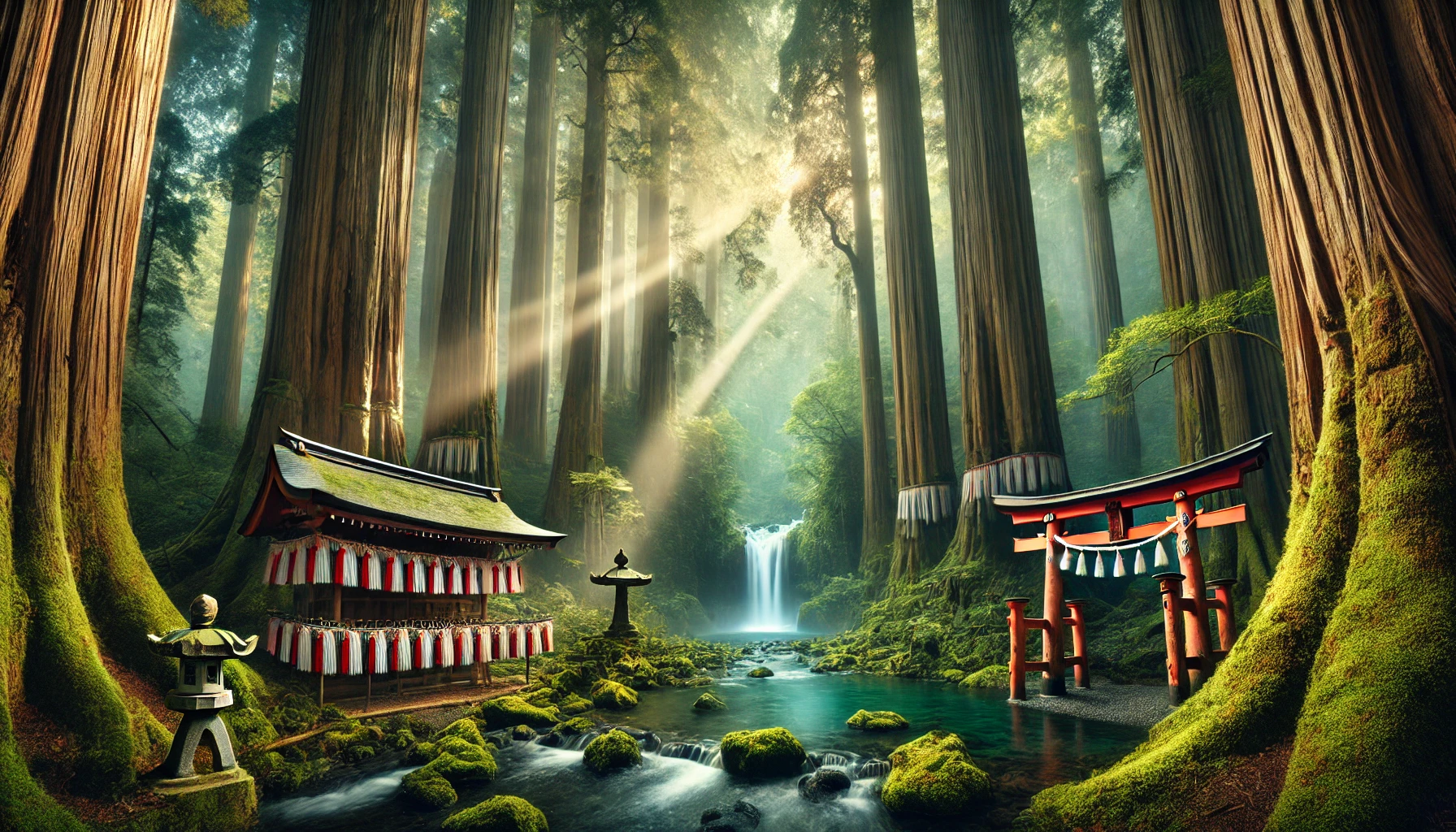
Comments